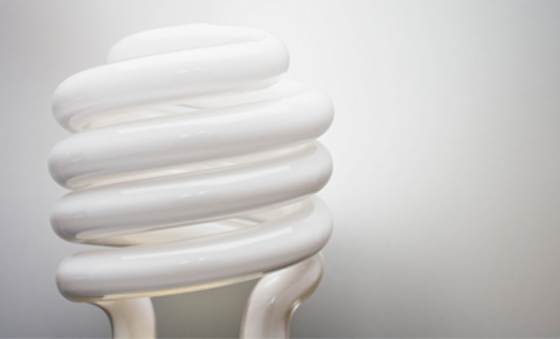- MENU
- HOME
- SEARCH
- WORLD
- MAIN
- AFRICA
- ASIA
- BALKANS
- EUROPE
- LATIN AMERICA
- MIDDLE EAST
- United Kingdom
- United States
- Argentina
- Australia
- Austria
- Benelux
- Brazil
- Canada
- China
- France
- Germany
- Greece
- Hungary
- India
- Indonesia
- Ireland
- Israel
- Italy
- Japan
- Korea
- Mexico
- New Zealand
- Pakistan
- Philippines
- Poland
- Russia
- South Africa
- Spain
- Taiwan
- Turkey
- USA
- BUSINESS
- WEALTH
- STOCKS
- TECH
- HEALTH
- LIFESTYLE
- ENTERTAINMENT
- SPORTS
- RSS
- iHaveNet.com: Home & Garden

Easy Energy Savers for Your Home
by Lauren Mang
Our energy-efficiency experts offer room-by-room tips to help you lower your monthly bills
Out-of-control energy bills are all too common for most homeowners. And it's not hard to see why: Constant computer use, washing dishes, doing laundry, heating and cooling your home, cooking dinner, and even taking showers all contribute to that shockingly high monthly number. The good news, however, is that here are more than a few simple (and insanely cheap) ways to transform your home from an energy-eating money pit to a more efficient, money-saving powerhouse.
Here, several green-living experts take on different rooms in the average home and offer their best ideas for quick, no-cost or low-cost fixes, plus larger energy-saving investments that pay off big in the long run.
The Attic
When it comes to your attic, there are two keywords to remember: air seal. "Particularly in a home that's more than 10 years old, [look to see if] you have any settlement gaps or other openings that have happened over time," says Jeff Bartos, president and CEO of the Philadelphia-based home energy assessment company Mark Group Inc. Bartos suggests using caulking or weather stripping to seal any gaps or cracks in the attic that are bringing in cold or warm air. How to spot those leaky gaps? Energystar.gov recommends looking for areas where the insulation is darkened due to filtering dusty air in from the house.
Bedrooms
In high-use areas such as bedrooms, Bartos says consider swapping outdated incandescent lightbulbs for either compact fluorescents (CFLs) or light-emitting diodes (LEDs). While slightly more expensive than standard incandescent bulbs, CFLs and LEDs have longer life expectancies (upwards of 50,000 hours), use about 85 percent less energy and emit less heat, which will help protect your bottom line.
Bathrooms
"If the hot water in your shower can scald you," says Dan Ruben, executive director for Boston Green Tourism, "you're throwing money away." Ruben suggests turning the hot-water heater down to 120 F or lower for maximum money-saving effects. Other inexpensive energy savers to implement in the bathroom? Switch out existing showerheads for low-flow versions (prices start at around $5, depending on the brand) and add an aerator (about $3) to all of your faucets -- both products mix air into the water, so you don't even notice a change in water flow.
Home Office
Sure, the photo montage of your kids that pops up on your computer when you're not using it is adorable, but Bartos suggests you skip the screensaver. And never leave your computer running while you're away. "If homeowners are putting [their computers] into sleep mode instead of shutting them down, they're using more energy than they think."
Kitchen
Are your kitchen appliances Energy Star-certified? If not, it may be time to replace them. According to EnergyStar.gov, an Energy Star-certified refrigerator is required to use 15 percent less energy than a non-certified model, which can cut your energy bill by more than $80 over the appliance's lifetime.
But if replacing a pricey appliance isn't in your current budget, Shel Horowitz, author of Painless Green: 111 Tips to Help the Environment, Lower Your Carbon Footprint, Cut Your Budget, and Improve Your Quality of Life -- With No Negative Impact on Your Lifestyle, recommends either unplugging your kitchen appliances or hooking them into a standard power strip that allows you to turn off all your appliances with one flip of the switch. Even if a plugged-in appliance is turned off, he notes, it's still using power and costing you money.
Living Room
To reduce energy loss via windows in a living space, Ruben says window coverings are an energy-efficient must. In the summer, keeping your windows shaded both inside and out can keep your home cooler by more than 70 percent. Keep your blinds or curtains closed from sunrise to sunset. Also, consider your landscaping. Planting shade trees on the south and west sides of your home could lower summer electric bills by $25.
AUTOS | HOBBIES | EDUCATION | FAMILY | FASHION | FOOD & RECIPES | HOME DECOR | RELATIONSHIPS | PARENTING | PETS | TRAVEL | WOMEN
Article: Copyright ©,
Home & Garden: "Easy Energy Savers for Your Home"